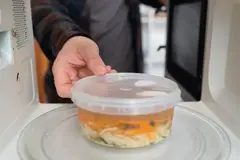GEA unveils third generation filtration technology
GEA Filtration has developed new technology that it claims allows for simpler, more efficient and more economical separations for dairy, food and beverage applications. The Isoflux membrane represents the third generation in membrane design and is a viable alternative to the fouling and inefficiencies caused by gel layer formation. The firm says that cross-flow microfiltration separations that are sensitive to variations in trans-membrane pressure (TMP) and are more efficient, more economical, and much easier to control than technologies used to date.
GEA Filtration has developed new technology that it claims allows for simpler, more efficient and more economical separations for dairy, food and beverage applications. The Isoflux membrane represents the third generation in membrane design and is a viable alternative to the fouling and inefficiencies caused by gel layer formation. The firm says that cross-flow microfiltration separations that are sensitive to variations in trans-membrane pressure (TMP) and are more efficient, more economical, and much easier to control than technologies used to date. In conventional microfiltration, as the product flows down the tubular element, there is a natural hydrodynamic pressure drop from the inlet to the outlet of the flow channel.
The uneven permeate flux distribution along the length of the flow channel can be very significant due to the resulting concentration polarisation effect particularly at the higher pressure inlet, and decreasing toward the outlet end. This fouling interferes with the product transmission through the membrane, decreasing the quality of the separation, shortening running time, and increasing costs. A second generation of membrane processes has attempted to solve this problem and create a uniform TMP over the length of the element by creating a pressure gradient on the permeate side of the membrane. This has been used in some dairy applications but suffers from significant problems such as the requirement for extra piping and pumps, an increased risk of contamination and a long residence time that affects the quality of the final product. To overcome the disadvantages of the second-generation technologies, Tami Industries of France invented and patented the Isoflux membrane for consistent trans-membrane pressure.
The Isoflux membrane controls the permeate flux with a variable thickness active membrane layer that produces a uniform permeate flux along the entire length of the element extending run times, maximising separation efficiency, and minimising both capital and operating costs. The membrane has been tested and according to GEA proven superior to other attempts to overcome the problem. The product is in commercial use for several difficult separations of fluid dairy products, and tests show similar results in specific biopharmaceutical applications, as well as other sensitive food and beverage separations.











